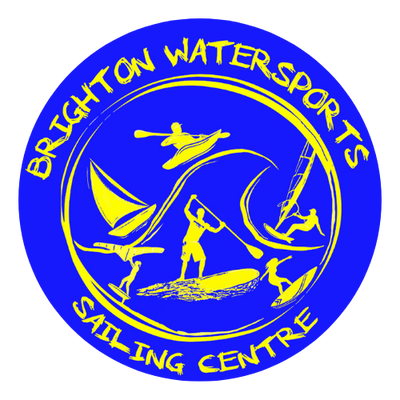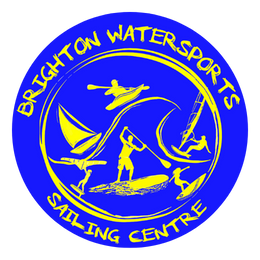Inflatable Stand-Up Paddleboards - Why Cheap Is Not Cheerful
The most common question we get asked in store is what’s the difference between a cheap paddle board of around £150 and an more expensive one of say £700. In this blog, we are just talking about inflatable paddle boards, not hard paddle boards, but the same concept applies, quality comes at a cost.
The internet is riddled with boards at £100-£200, and many stores have jumped on the isup (inflatable stand-up paddleboard) trend but putting boards out at £150. Whilst these boards can be a lot of fun for the kids to play on, they are just an expensive lilo, and no good for adults to enjoy the sport. They will also have no second hand value. The used market is riddled with people who have made this mistake of buying cheaply made isups. These cheap boards don’t sell in the second-hand market, so they quickly end up as landfill decomposing after about 450 years making them very damaging to the environment. At Brighton Water Sports, we can’t bring ourselves to sell these cheap boards. These cheap isups make the sport difficult to learn, and can develop leaks really easily. You don’t want this when you are on the sea. We also like to hear our customers happy tales of joy and excitement rather than complaints of faulty kit.
A bit like the 3 little piggies nursery rhyme, if you don’t make a house properly it ceases to be a house! Inflatable paddle boards are the same. To be any good ie stable enough to stand on and last 10 years, it needs to be built well. To be made well requires a certain quantity of materials, and those materials need to be good quality. You simply can’t tick all these boxes and retail at £100-£200.
Also, when dealing with some of these companies especially online, you will get all the customer service until the point of sale, after that, I doubt you will get any support. Many online stores, although look like UK companies, are actually direct from the factories, often China, so good luck with any warranty issue (this doesn’t apply to all, just some). Don’t always trust the Isup review sites either. It’s very easy to manipulate these. Some factories make the same board under different names and create a review platform which they run themselves, a bit like the online company with the same name as a river.
We had one poor chap had delivery of the board, it leaked the first time he pumped it up, and despite sold with a warranty, emails and telephone call replies went dead.
We also have many people who come in and say, “I can’t stand on my inflatable paddle board, what am I doing wrong?” I ask what brand it is and how much did it cost and 90% say about £200. There is your problem, its not made well and about the only time you can fairly blame your tools.
Much the same as a cheap pvc football, its light and single layer, when you kick it, you’ve no idea where it will go, and probably pop when kicked by anyone above 3yrs old. Whereas if you buy a more expensive ball, there is several layers, its heavier, it goes where you want it to go, and will last many years.
Cheap inflatable paddle boards are often single layered, cheap glue and low-quality drop stitching. The layers help with the stiffness of a board and also prevent punctures. The layers, mostly PVC, make the top deck and bottom deck of the paddleboard, these are held together with drop stitching, keeping the layers 4-6 inches apart using nylon thread. More top and bottom layers prevent the board from bending to the shape of a banana when you stand on it, and reduce chances of an easy puncture.
The side walls of a paddleboard are called the rails. This is a strip pvc that is glued around the side of the board creating a wall and connecting the top of the board with the bottom. The rails also need layers to stop the board from twisting. It’s these features that give the board stiffness, and it’s the stiffness that you need to help you balance when you stand, standing being the basis of the sport. More layers, more stiffness, more cost but better balance and making paddleboarding on inflatable boards easier and more enjoyable.
Cheap inflatable paddleboards use cheap nylon for the drop stitch, this will stretch under pressure and over time. These Isup boards are pumped to 15-20 psi, so immense pressure. In time the cheap inflatable boards will lose the “board” shape. Cheap boards also use cheap glue which goes hard and brittle after a couple of years. The glue keeps the rails connected to the top and bottom of the board and keeps it airtight. When the glue goes hard, it cracks, the board will leak air at the seams. When this happens, that’s the end of the board, RIP, as it is very hard to patch the seam, and pointless as the glue will be from the same batch, so all the glue will start to go brittle, you will fix one section only for another to leak.
A higher priced inflatable paddle board will have more layers on the top, bottom and rails. This creates a real solid platform that doesn’t twist nor bend, making balance and standing much easier. They will use strong non-stretch nylon in the drop stitch, and good quality glue that should last. The lifespan of an inflatable paddle board is unknown as the sport is relatively new. But we have been selling paddleboards for near 20 years, only in the last 10 years have they really nailed the Inflatable construction. We have customers from 10 years ago who still have their Isups. Brands we know that last are O’shea, Fanatic and Jobe. These are ones we have tested on a busy Brighton Beach being battered by hundreds of customers every year. We are sure that there are plenty of other good brands out there, we just haven’t tested them yet.
So, we recommend not going cheap on an inflatable stand-up paddleboard. It will be made with better quality materials that will last longer. It will also be designed with the user experience in mind. This will elevate your green credentials and your whole experience of ‘Living Life Beyond The Shoreline’ will be a fun and joyous one.




